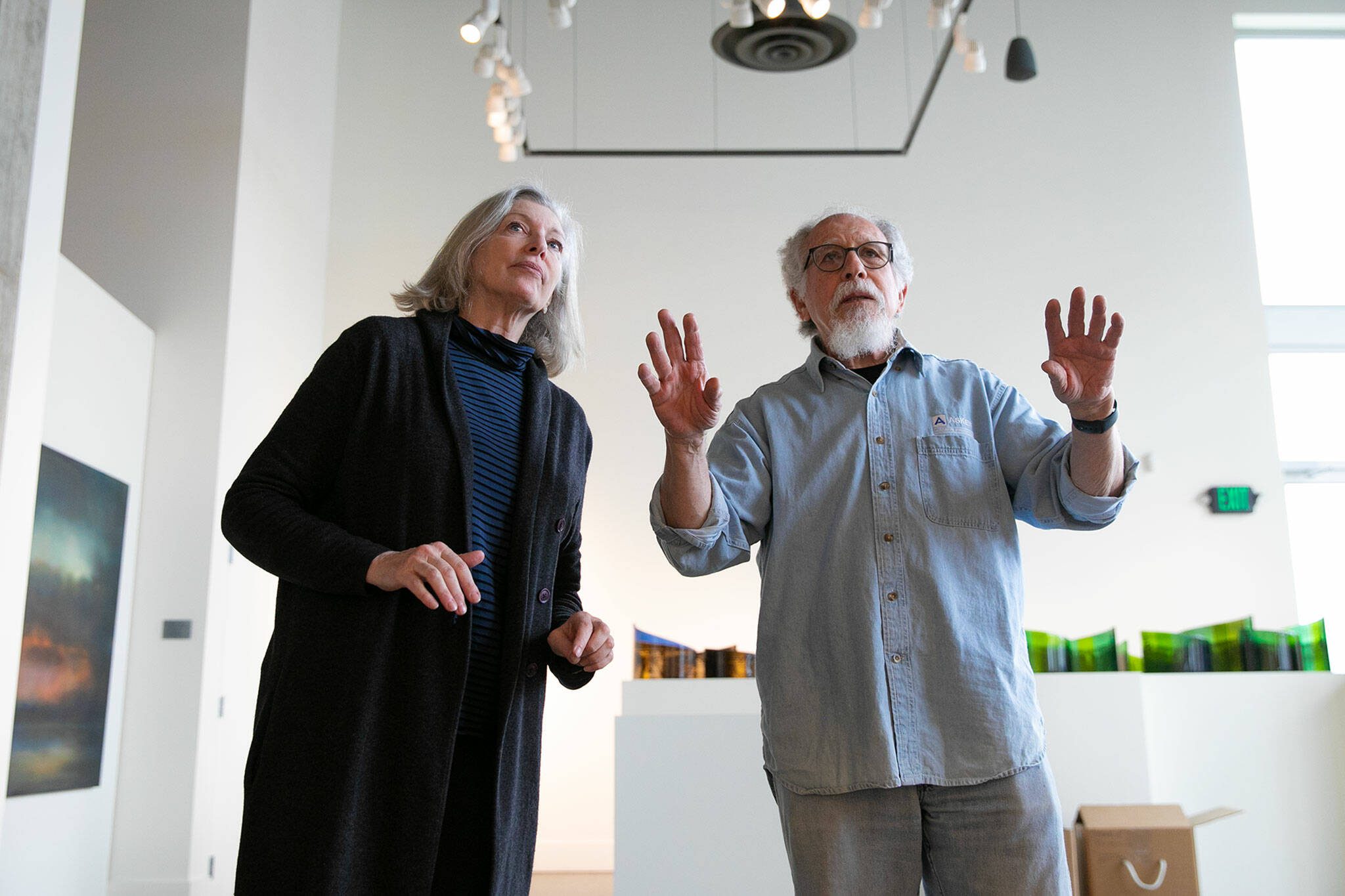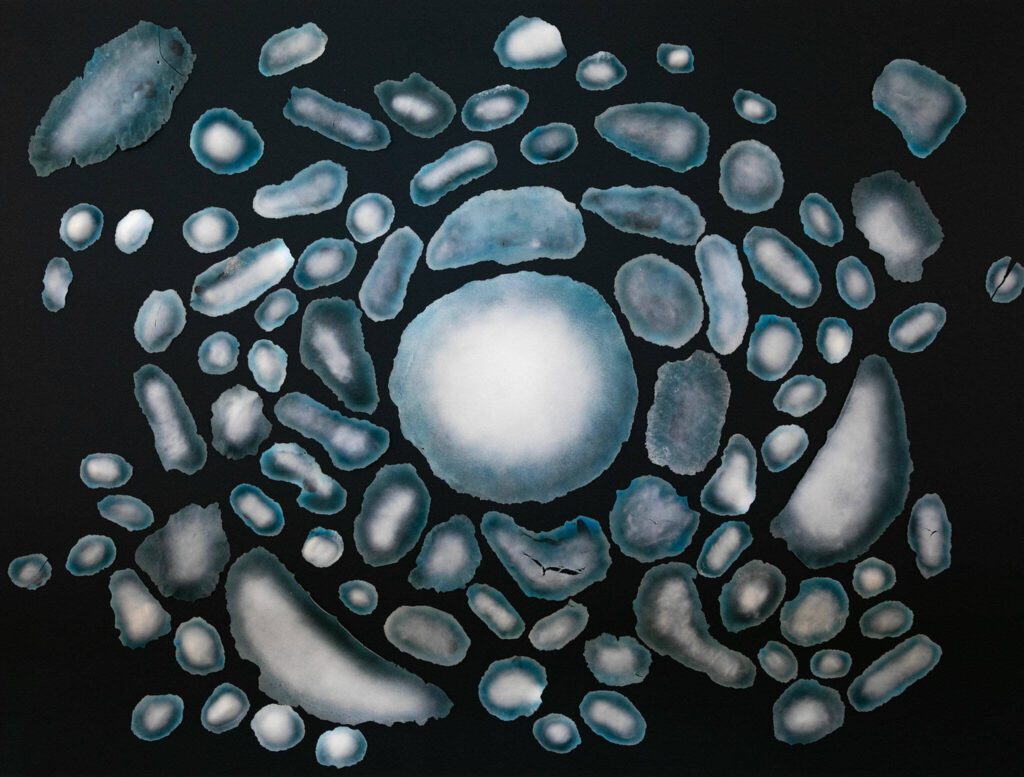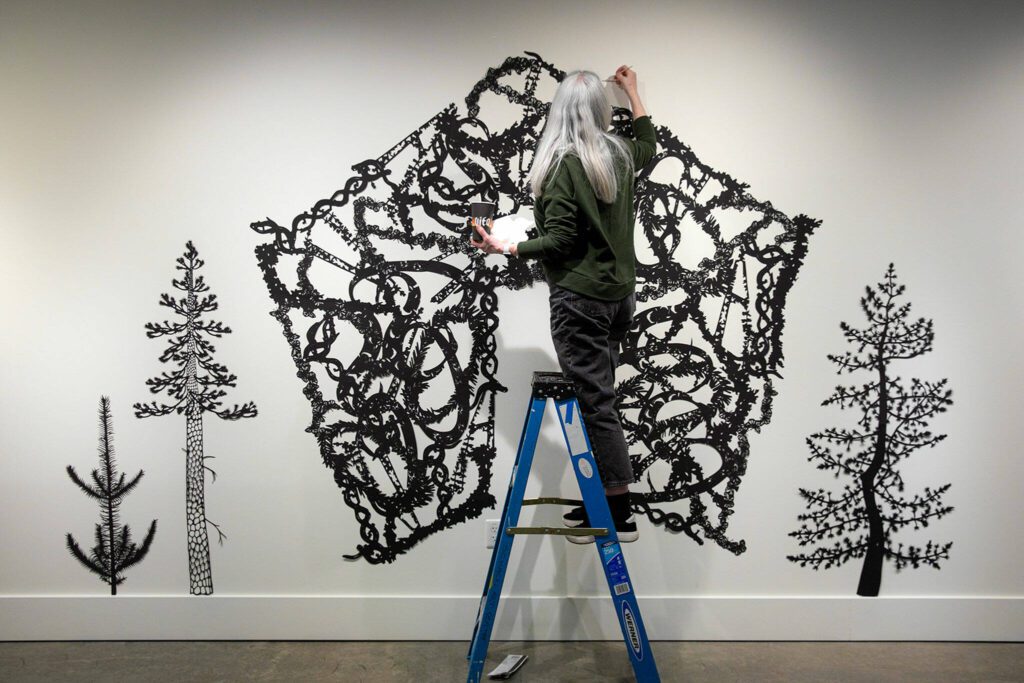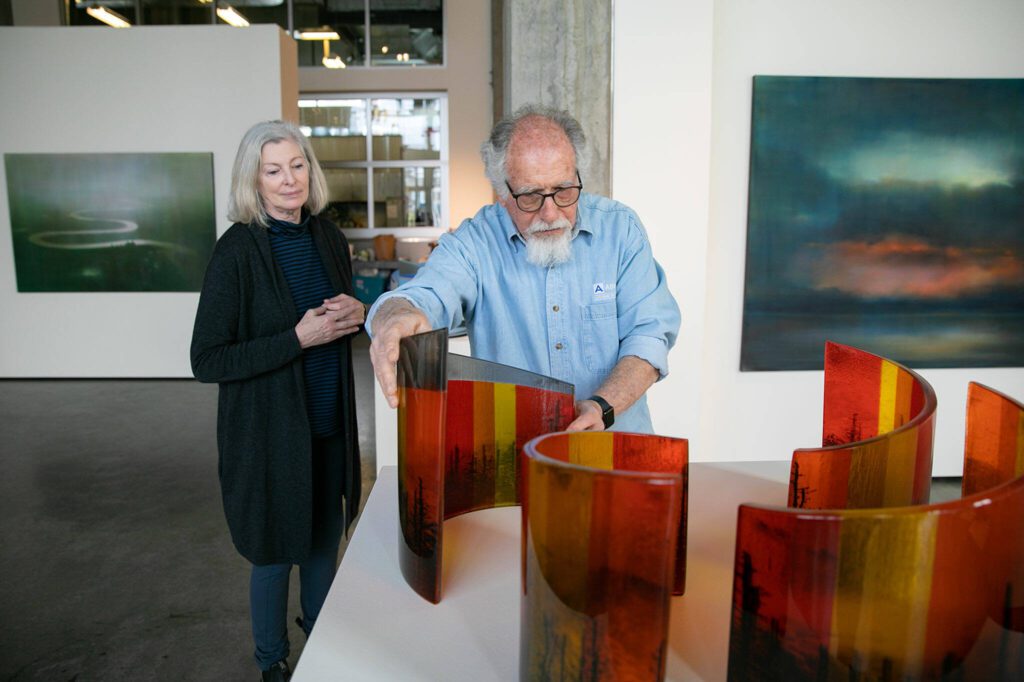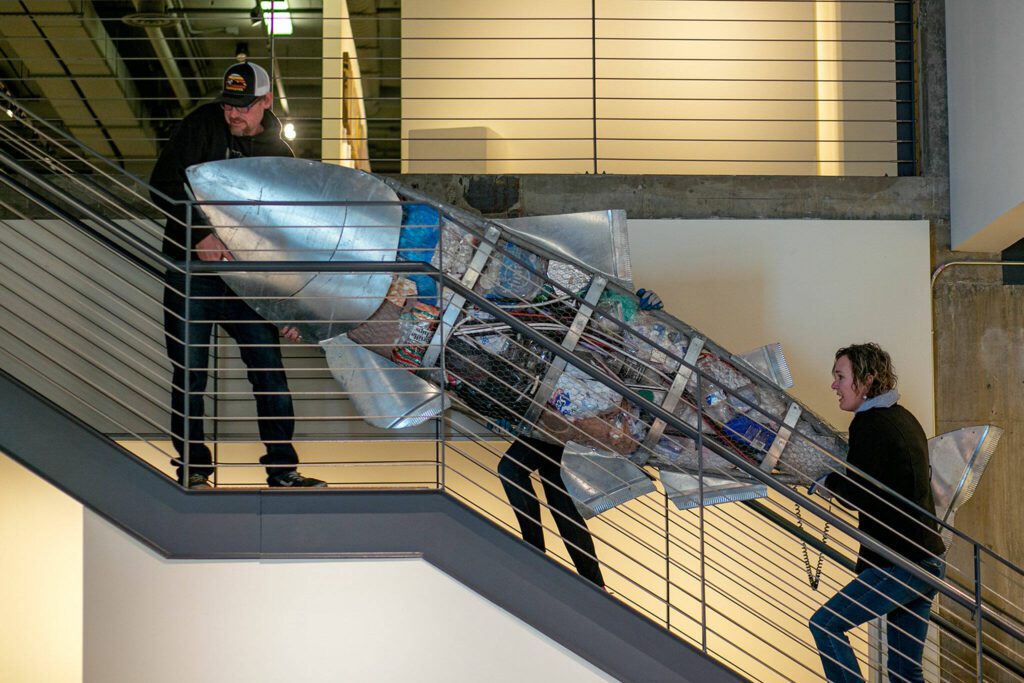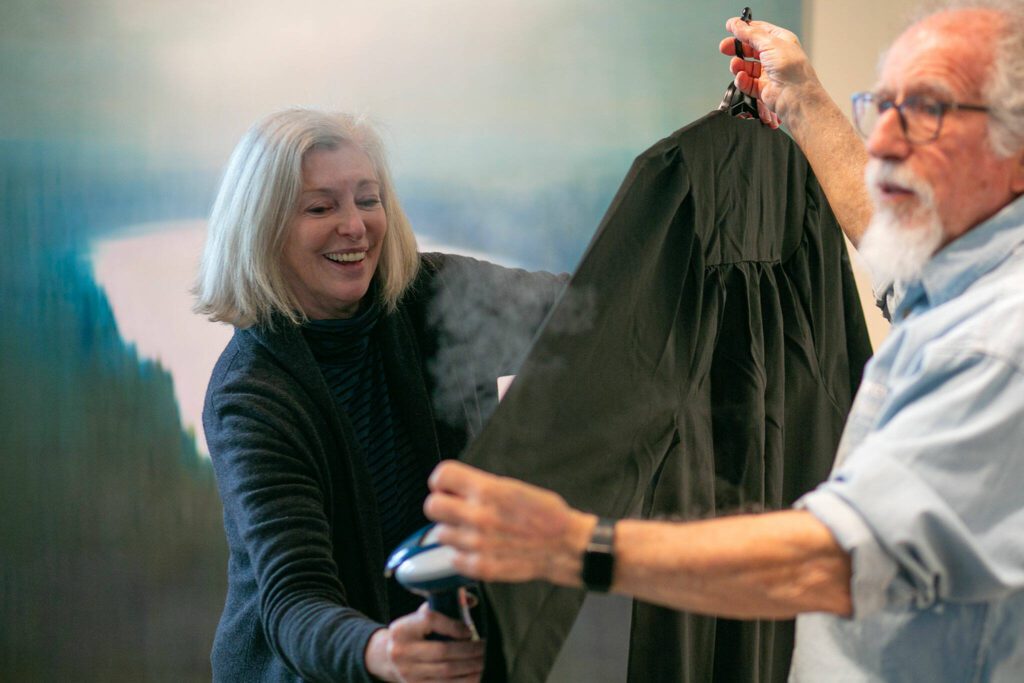Meg Holgate’s dreamlike paintings seem to gaze back at you. The abstract landscapes are mildly unsettling but also compelling.
“I want viewers to focus on the beauty, because that’s what we are at risk of losing,” Holgate said of the work she created for “A Precarious Edge.” The Schack Art Center exhibit focuses on climate change, and also features the work of Holgate’s friend and fellow La Conner artist Steve Klein.
The downtown Everett show, which runs through June 3, opened Saturday with tours and a reception from 2-4:30 p.m. A companion exhibit features the work of 10 regional artists chosen by Klein and Holgate. Called “Exploring the Edge,” it is on display upstairs.
The Holgate and Klein art – 33 works in all – fill Schack’s expansive first floor gallery. Much of it was included in the first version of “A Precarious Edge,” shown in 2022 at the Museum of Northwest Art in La Conner. The two welcomed the invitation to expand the show for the Schack.
When offered the chance to create the joint exhibit in La Conner, they quickly settled on a climate theme and spent two years creating the art. They had imperiled beauty and young people in mind.
“We’re not destroying the earth for our generation, we’re destroying it for future generations,” said Klein, who specializes in sleek glass sculpture.
While Holgate has long explored environmental themes, Klein has turned his attention to them in the last few years. And with gusto. “I’m 76 years old,” said the Pilchuck Glass School board member and former instructor. “I can pick and choose what I do.”
Holgate’s largest paintings invite contemplation. A serpentine river glows through a haze of pollution. A mysterious lake mirrors the sky. One watery work titled “Net” brings to mind fishing, or connection, or perhaps a littered sea. In addition to the abstracts, Holgate painted a series of colorful insects with piercing eyes. In one trio of paintings, enormous tree rings document the passage of years.
The artists wanted to avoid a sense of climate doom, Holgate said. “We’re looking at this with an attitude of hope.”
Melting glaciers are prominent in the exhibit. Holgate’s painted glacier is pure geometry, a black slash cleaving white. Klein’s glacier is fragmented into eight small glass panels, each on a pedestal, each in turn depicting a smaller band of white. They evoke ice melting away under blocks of sky blue.
The artists’ one collaborative work, “Cryosphere,” features scattered patches of wafer-thin glass on canvas. The patches, in five delicate shades of blue, appear to drift away from a frozen continent.
Holgate describes her work as contemplative. In contrast, Klein said, “Some of my pieces scream a little louder.”
He expects his only non-glass sculpture to get a lot of attention. Titled “West Virginia vs. The Environmental Protection Agency,” it objects to the 2022 U.S. Supreme Court decision that weakened federal oversight of air quality. Six red hatchets representing the conservative majority of judges plunge into tree trunks, while the dissenters in the form of blue hatchets are displayed behind glass. “They are there to protect, not destroy,” Klein said of the latter weapons/judges.
For the upstairs “Exploring the Edge” show, artist Max Benjamin created his first protest art since the Vietnam War. That long-ago piece was a response to the 1970 Kent State University shootings. His latest painting features an ominous dark swarm and is called “MAGA’s Locusts.”
Natalie Niblack’s nearby installation, “66 Birds/3°,” documents species that Western Washington stands to lose as temperatures rise. As viewers approach each avian portrait, they hear that bird’s song. “The direct gaze of the birds is the confrontation of all nature at risk,” Niblack explains, adding that the species loss is “just a fact, for the viewer to absorb, and to act or not act.”
Other artists in the multimedia show are Karen Hackenberg, Steve Jensen, Ann Chadwick Reid, Joseph Rossano, Lucy Mae and Pieter VanZanden, and Lesley Langs. Klein describes them all as “friends whose work is very meaningful and think like we do about the environment and global warming.”
Some of the artists, including Holgate and Klein, are members of the climate-focused organization Earth Creative. Its founder Christophe Chagnard composed the theme music of “A Precarious Edge.” Chagnard will show his short film “Terra Nostra” at a panel discussion of the exhibit from 1 to 4 p.m. on April 15.
On Earth Day, April 22, Schack will partner with Everett Public Library to offer docent-led tours, said education director Raedle Alburn.
It was the art center’s education committee that chose the climate topic for this spring’s exhibition, she said, in keeping with state efforts to include climate lessons in public school curriculum. There will be a teacher workshop, student tours and a free teen art night.
“Art is a good way to express fears about climate change and also inspire hope,” Alburn said.
Julie Titone: julietitone@icloud.com; Twitter: @julietitone.
Julie Titone is a freelance writer who reports on climate change for The Daily Herald. Her journalism is supported by the Herald’s Environmental andClimate Reporting Fund. Learn more and donate: heraldnet.com/climate-fund.
Talk to us
> Give us your news tips.
> Send us a letter to the editor.
> More Herald contact information.
